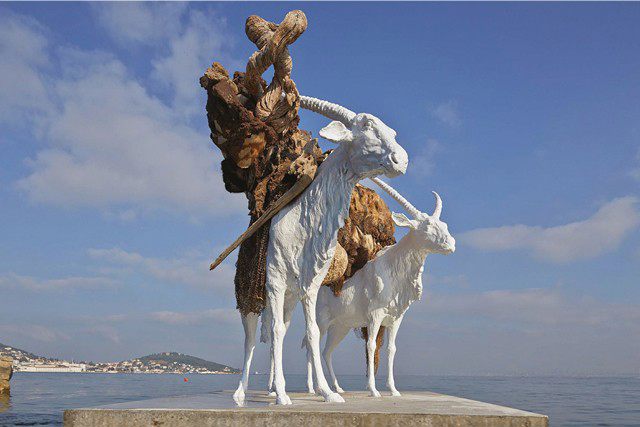- Open Today: 10.00–18.00
- Ticket
- Shop
- Membership
- TR EN

Adrián Villar Rojas, 1980
The Most Beautiful of All Mothers (I), 2015
Born in Rosario, Argentina, Adrian Villar Rojas studied fine arts at the National University of Rosario. The artist primarily produces large-scale site-specific installations and sculptures concerning the Anthropocene, a name for the period in which humankind now influences the world’s ecosystems. Rojas has no fixed studio, but rather works on each project with a traveling team.
The works incorporate found objects and organic materials such as clay, cement, rock, and fossils as well as fruits, vegetables, and earth. They refer to the environment, nature, history, and culture, highlighting the contrast between nature’s inherent unity and humanity’s cultural dominance. Rather than interventions into the world and humanity, they serve as witnesses who seemingly retain a neutral stance and an inner solitude. They emphasize the fragility and ephemerality of our existence and motivate us to look at humanity from an external perspective—perhaps from an unknown, postapocalyptic future.
“The Most Beautiful of All Mothers (I)”, a site-specific installation on Büyükada island for the 14th Istanbul Biennial, imagines what it would be like to view Earth and human culture through the eyes of an alien, without prejudice. Each life-size, smoothly finished animal made of white fiberglass carries another animal on its back, the latter made of organic waste and inert materials gathered from different countries and whose form is indistinct because it has been worn away by seawater. The goats are part of the twenty-nine sculptures of animals that stood alone or in groups off the shoreline by the ruins of Leon Trotsky’s house.
Sculpture
Organic and inorganic materials
Istanbul Museum of Modern Art Collection